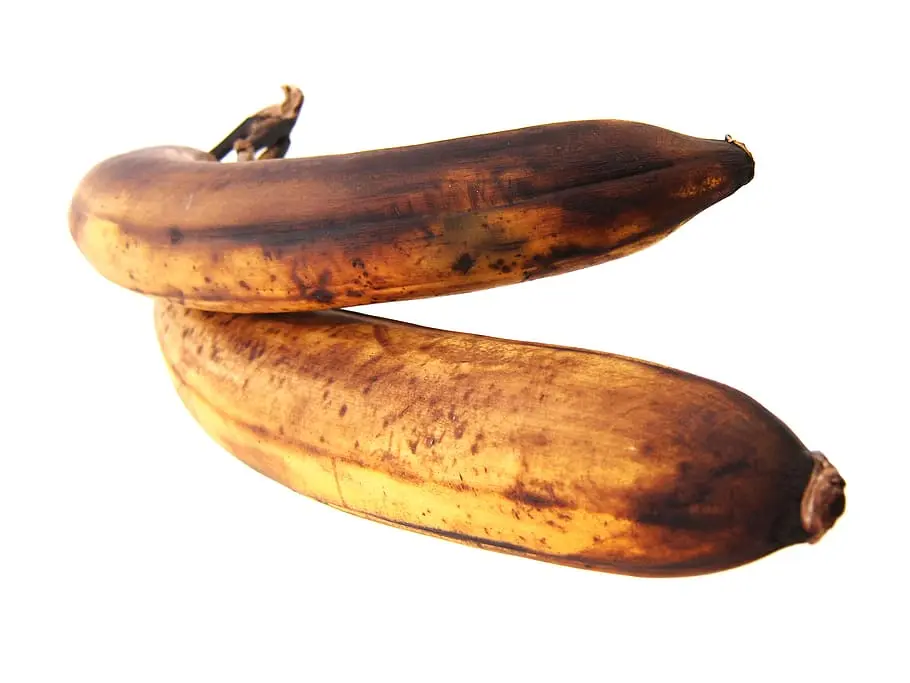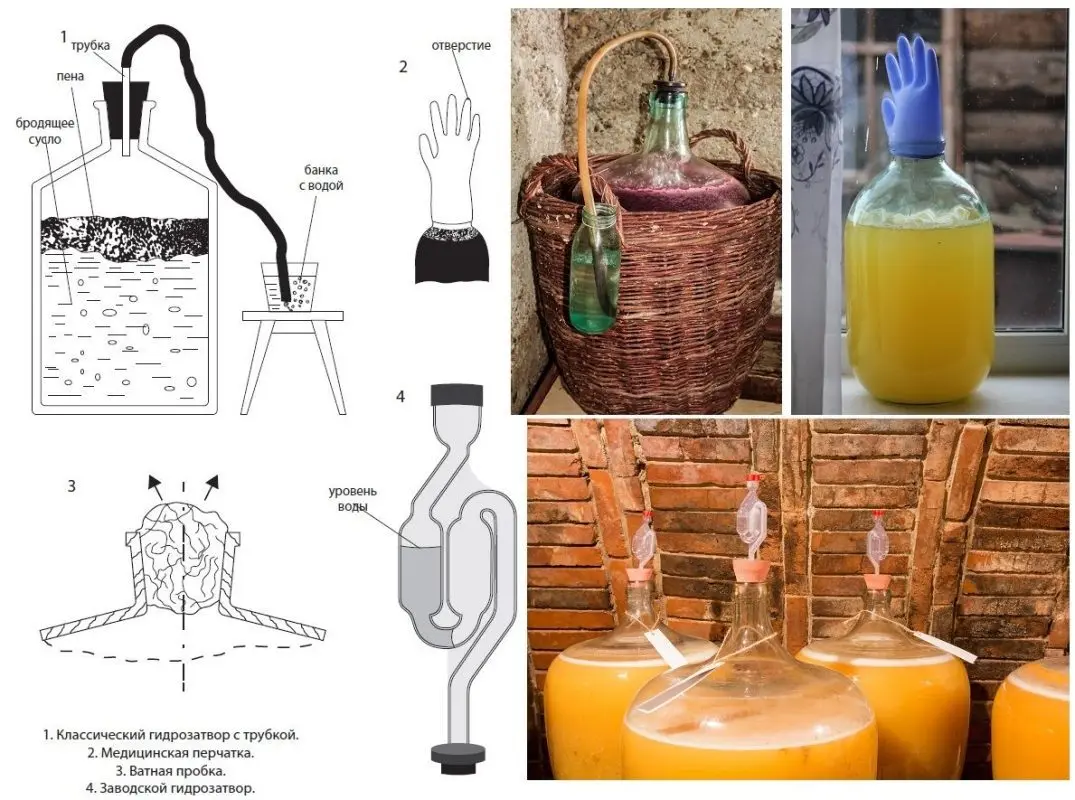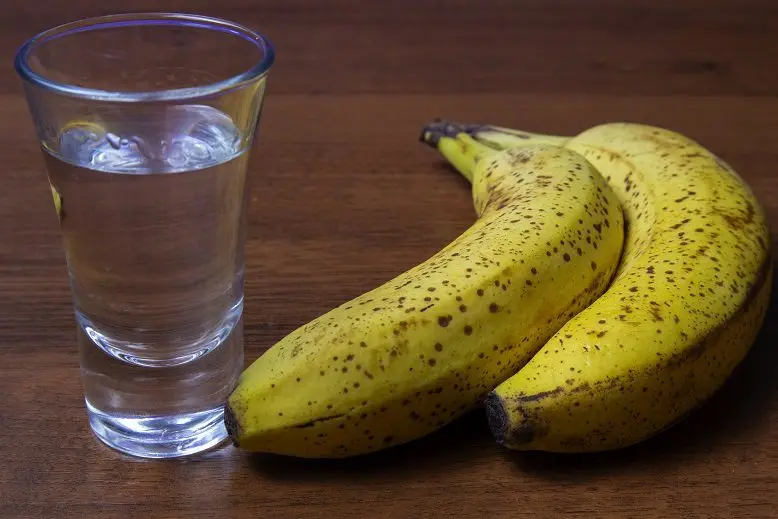Getting overripe bananas at an affordable price is not a problem, but this “capricious” raw material requires a special approach from the moonshiner. First of all, banana moonshine will be of interest to lovers of exotic alcoholic drinks that are not on sale. The technology is relatively complex, requiring wort boiling. But the output is a distillate with a subtle aroma and a slight banana aftertaste.
For the preparation of mash, any bananas are suitable (preferably overripe). The main thing is that they are free of rot and mold. Outside, the peel may turn black, but the flesh itself will remain usable. Often substandard fruits go to moonshine.

Putting mash with banana skins is undesirable, because in order to increase the shelf life before transportation, the peel is treated with toxic chemicals that get into the finished moonshine. At the same time, there is almost no sugar in the skins, as well as aroma.
Ingredients:
- bananas – 10 kg;
- sugar (optional) – 1-4 kg;
- water – 5 liters (plus 4 liters for each kilogram of sugar);
- yeast – 60 grams dry (300 grams pressed) or sourdough;
- cookies (preferably) – 1 piece per 10 liters of mash (can be replaced with kefir, sour cream or vegetable oil).
Braga from bananas emits a lot of foam, ordinary cookies without flavoring additives and dyes, crumbled on the surface of the mash, perfectly extinguish the foam. For the same purpose, vegetable oil or dairy products are used, the proportions of which are indicated in the recipe.
The more sugar, the less banana notes are felt in the distillate, I advise you not to add sugar at all. To get moonshine of the highest quality, it is advisable to replace ordinary wine yeast or make sourdough using the standard method. At the same time, one should not forget that fermentation on wine yeast or sourdough lasts several times longer than on ordinary ones.
Depending on the variety, bananas contain up to 30% sugar, 1-1,5% starch and 0,7% inulin, a polysaccharide that can be broken down into sugar by heating to a high temperature, as described in the recipe. I consider it inappropriate to sugar 1% starch with malt, since the yield will increase slightly, and the addition of malt will greatly affect the aroma and partly the taste.
The approximate yield of banana moonshine from sugar is 2,2-2,5 liters (40%) from 10 kg of raw materials.
banana mash recipe
1. Peel bananas.
2. Grind the pulp with a meat grinder or in any other way to a puree state.
3. In a container suitable for heating, mix mashed potatoes, water and sugar (if used). You should get a uniform consistency.
4. Heat the contents of the container to 55-58°C, maintain the specified temperature for 60 minutes, stirring occasionally so that the gruel does not burn on the bottom and no lumps appear. Then cool the wort to 30°C. During this stage, the inulin in the banana pulp will be converted into fermentable fructose.
It is very important not to overheat the wort above 60°C, because at higher temperatures the enzymes are destroyed, as a result of which the inulin does not turn into fructose.
5. Pour the wort cooled down to 25-30°C into a fermentation tank. Add yeast or sourdough. If the mash is very thick, add more water to make it runny. Mix.
During fermentation, banana mash produces a lot of foam! I advise you to fill the container with a maximum of half, and crumble cookies on top (1 piece per 10 liters of mash). This method works best. An alternative option is to add vegetable oil (1 teaspoon per 10 liters) or thick sour cream (kefir) in the proportion of 2 tablespoons per 10-12 liters.
6. Install a water seal or a medical glove with a hole in one finger on the neck of the fermentation tank.

7. Transfer the mash to a dark place (can be covered) with a temperature of 18-27°C. Depending on the selected yeast and temperature, banana mash ferments from 5 to 45 days. When the water seal has stopped emitting gas, the taste is bitter without sweetness, and sediment has appeared at the bottom, you can proceed to the next step.
Getting banana moonshine
8. Strain the mash that has won back through 2-3 layers of gauze. Squeeze out the pulp well. If not filtered, the mash will burn during the distillation process, as a result of which the moonshine will have a bitter aftertaste and an unpleasant odor.
9. Fill the distillation cube of the moonshine still with filtered mash.
10. Distill for the first time, withdrawing the distillate, until the strength in the stream falls below 30%. Measure the overall strength of the product. Determine the amount of absolute alcohol (multiply the total volume in liters by the percentage of the fortress, then divide by 100).
11. Dilute the resulting moonshine with water to 18-20%, then overtake a second time. Collect the first 12-15% of the total alcohol yield separately. This harmful fraction is called “heads”, you can not drink it.
12. Finish the selection of the main product (“body”) when the strength in the jet falls below 45% (stops burning).
13. Dilute the finished banana moonshine with water to the desired strength (40-45 degrees). Before use, it is advisable to keep the distillate for 2-3 days in a dark, cool place in hermetically sealed glass containers to stabilize the taste.










